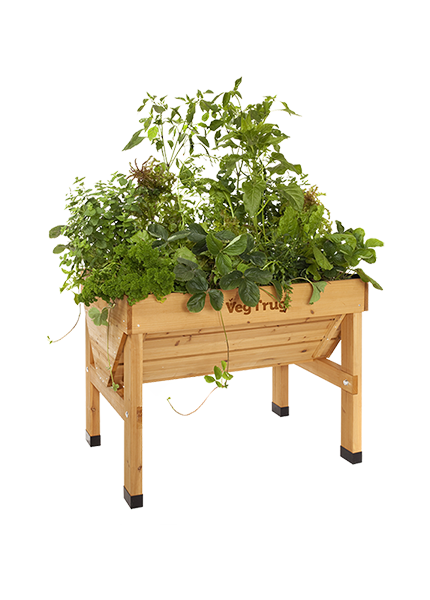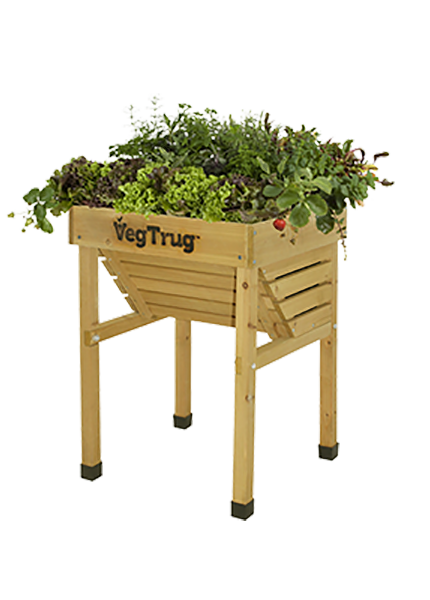It’s a firm favourite base of any salad throughout the fair months of the year. And it’s easy to grow too.
Lettuce comes in two main types: those with a dense central heart and those with loose leaves. Experiment with different varieties in your VegTrug, that way you’ll have a wonderful range of lettuces to choose from, that will add new dimensions to any salad.
Read more on how to grow lettuce in our guide below.
Sow your lettuce about 1cm deep in rows in the spring and then thin the plants out to about 30cm between each. You can sow earlier (or later) in the season but you will need to cover them to protect from frost.
When to sow depends on when you want to harvest, but some varieties might struggle to germinate in the hottest soil temperatures. Lettuce thrives in temperatures between 15°c and 21°c.
Leafy lettuce varieties can be harvested in around 30 days whereas other varieties can take up to eight weeks. Lettuce does not like really hot weather and tends to go to seed early when the temperature soars. Digging in good compost before sowing can help stop your lettuce going to seed.
Keep the soil around the plants weed free and water whenever necessary. Mulch can help keep moisture in your soil.
Thin out lettuce to about 30cms apart. You can re-plant the thinnings into another row, or another VegTrug, because they do transplant easily.
But a good rule when learning how to grow lettuce is don't sow too many at one time but instead try and keep sowing a few each week throughout the summer. This will give you a constant crop.
Sparrows will eat your young lettuce, so cover with a net or fleece. A mesh netting or VegTrug cover will also discourage the snails and slugs that will find your lettuce so tasty.
Root aphids are another lettuce pest and you may not see them as they attack the root. Ants are often a sign of aphid root as they feed on the honeydew that aphids leave behind. If your older lettuces suddenly wilt and die, it could be root aphid.
Other problems include grey mould which can damage your crop. If you start to see fuzzy, mouldy growth then remove the affected leaves before it can take hold in a big way. Improving air circulation around the crop and reducing humidity can help.
Once you’ve learned how to grow lettuce you can enjoy a long supply. As soon as a firm heart has formed you can cut the lettuce away at the stem, wash and add it to a colourful salad. If it’s a leafy variety with no stem, just harvest some or all of the leaves when they’re big enough to enjoy.
Lettuce is very sensitive to the temperature and the leaves can sometimes taste better if picked in the morning before the sun is too hot.
How to grow lettuce is part of the VegTrug Grower’s Guide.

